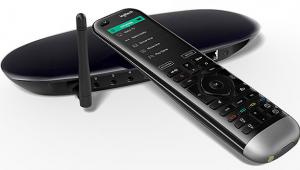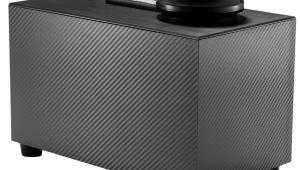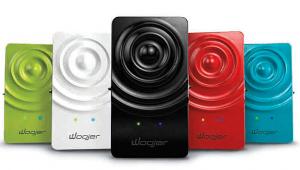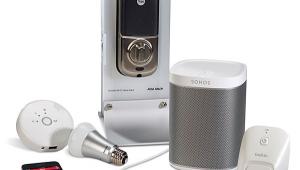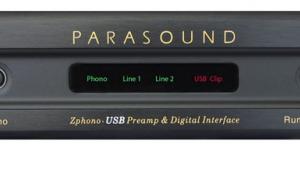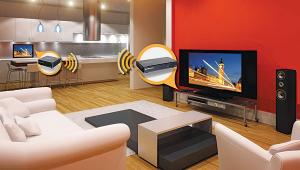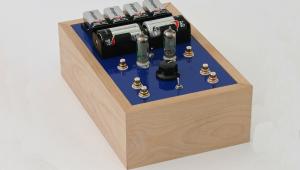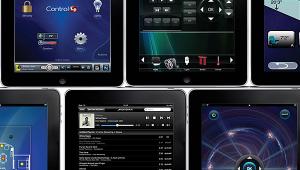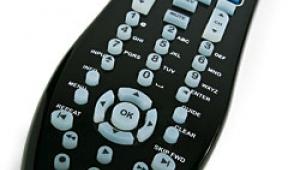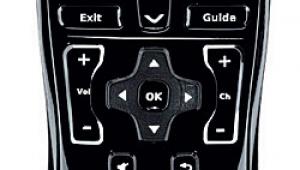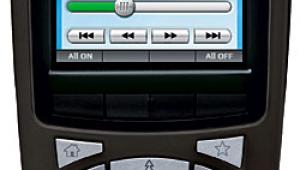PureLink HD-150 1:5 HDMI Distribution Amplifier, HS-42A 4:2 HDMI Selector, HDC Fiber Optic HDMI Extension Cable
The situation appears to have improved somewhat over the past year or so, at least in my experience. But when I'm evaluating a display or source—which is much of the time—I avoid using a switcher, so I only have the compatibility of the source and display to deal with.
HDMI switching is now included in many new AV receivers. But if you have an older AV receiver or pre-pro, particularly a higher-end pre-pro that might have passed on such niceties as video switching on the grounds that it can mess up the audio, you might need an outboard HDMI switcher.
You might also need something called a distribution amp. This is sometimes called a splitter because it takes a single HDMI source and splits it into two or more HDMI feeds. If you own, say, a plasma for everyday use and a projector for movies at night with a screen that drops down in front of the plasma, it's a handy item to have. But this category of product is far more rare than switchers, and I haven't yet seen one built into a receiver or pre-pro. One reason is cost; it's expensive to build a distribution amp that is fully compliant with HDCP (High-bandwidth Digital Copy Protection.
In was, in fact, the HD-150 ($799) distribution amp that aroused my interest in PureLink's products. While I was at it, I also decided to have a look at its HS-42A ($699), a four-in, two-out selector (a combination switcher and distribution amp) and HDC Fiber Optic HDMI Extension Cable.
The HDC looked particularly interesting. Its selling point is its ability to serve the sort of long runs at which no standard, wire-based HDMI cable will work. To do so, it converts HDMI (or DVI) from electrical signals to "lightwave" signals suitable for transmission via fiber optics. HDC's built-in active "opto-electrical" converter then converts it back from lightwave to electrical at the display end. PureLink claims this allows for runs of up to 330 feet for 1080p sources with zero pixel loss or data error.
The 100-foot run of HDC we received (the HDC-030) retails for $999. Stock sizes are available in a variety of lengths down to 10' ($399), though at that length practically any standard HDMI cable, at a fraction of that price, will provide equivalent performance. It's at far longer lengths (25' and above) that the HDC justifies its high cost.
Both the HD-150 and HS-42A are specified to be fully HDCP compliant. Both of them will also pass information at both above white and below black, which is not true of all HDMI switchers and distribution amps.
The HD-150 HDMI Distribution Amplifier
The HD-150 comes in a simple, black anodized case, with an outboard 5V "wall wart" power adapter. Each of its six HDMI (1.2) jacks (one in, five out) has a yellow DVI/HDMI LED that indicates when it's connected to an active source or display, plus a green LED that indicates if that source/display is HDCP-compatible. These LEDs are very bright, and in a darkened room you'll want to place them out of sight.

On the back is the 5V power connection plus a DIN jack labeled "Download." I presume that's intended for firmware updates, but this jack is not mentioned in the owner's manual.
How does the HD-150 work? On the video side, it was superb. My initial reaction was that there was no loss of any kind compared to a direct feed from the sources I used—1080i from HD DVD, 1080i and 1080p/24 from Blu-ray, and 1080i test patterns from an Accupel pattern generator.
While my head, at least, told me there was no change at all, I must admit that on the very best-looking HD material I have on hand (which just happens to be 1080i from a Pioneer demo Blu-ray disc that's not available commercially), I had a gut feeling that the straight feed, without the HD-150, might have a hair more of that "looking through a window" feel with a top-rank projector (such as the 1080p JVC DLA-RS1) used on a big screen (78" wide).

